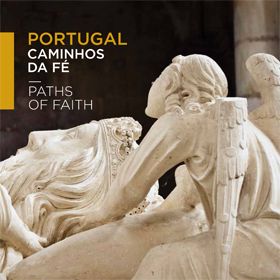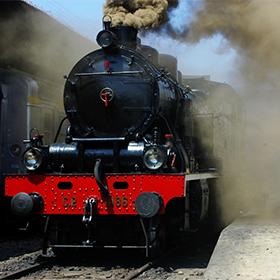Caminhos de Santiago (St. James Way)

Don't miss
- visit the cathedrals of the cities that are on the Ways, typically from the 12th and 13th centuries
- discover in Barcelos the cross of Senhor do Galo that reproduces an ancient Jacobean legend
- visit the Convent of Christ in Tomar, which was the seat of the Knights Templar, exactly because it was on a pilgrimage route
- explore the Alfama district through which the Way passes on leaving Lisbon Cathedral
- visit the Tile Museum in the Convent of Madre de Deus, on the same Way, leaving Lisbon
- and discover the Parque das Nações (Park of Nations) in Lisbon, where the Santiago pilgrims mingle with those on the Fatima Way as they exit Lisbon
The Caminhos de Santiago that cross Portugal from south to north have been followed by pilgrims for centuries. Taking them is to set out on a discovery not only of the country but of ourselves too.
The destination of these Ways is the Cathedral of Santiago de Compostela in Spain, underneath which, so the legend goes, is the tomb of the Apostle James, who evangelized the Iberian Peninsula, then a province of Rome. The cult of this saint became popular during the Middle Ages resulting in great pilgrimages from every corner of Europe. And in Portugal it has been widespread since the 12th century, with the founding of the Portuguese nationality.
There are a number of Ways through Portugal to Santiago, depending on the pilgrims’ point of departure, but currently three main caminhos can be identified.
The oldest is the Northern Way. It leaves from Porto Cathedral and goes through Rates (where St. James himself ordained the bishop who gave his name to the Romanesque church of São Pedro), Barcelos, Ponte de Lima and Valença, where it enters Spain. In the Middle Ages, the Northern Way had variants, and it was common to pass through Guimarães (in whose Praça de Santiago legend has it that the Saint placed an image of Our Lady), but especially through Braga, which disputed with Compostela the title of the centre of Christianity in the Peninsula since it was the seat of the Archiepiscopate of the whole Iberian Peninsula. Its first bishop was in fact the Bishop of Rates. Another variant was the Geira Way (an ancient Roman road) that crossed Gerês up to Portela do Homem. But there was also the Northern Coastal Way which today is marked. It also departs from Porto and the route goes via Vila do Conde, Esposende, Viana do Castelo and Caminha, where you can cross into Spain, or continue to Valença.
The Inland Way links Viseu to Chaves, and enters Spain at Vilarelho da Raia, having gained new life with the erection of guidance signage and the opening of hostels for pilgrims. Leaving from Viseu, this Way passes through Castro Daire, Lamego, Peso da Régua, Santa Marta de Penaguião, Vila Real and Vila Pouca de Aguiar, before reaching Chaves. It joins Via da Prata, the ancient Roman trade route that crossed the west of Spain.
Further south, the great Central Portuguese Way coincides until Santarém with the Tagus Way on the pilgrimage to Fátima. It leaves from Lisbon Cathedral and follows the banks of the River Tagus via Alverca, Vila Franca de Xira, Azambuja, Santarém, Golegã and Tomar, the former seat of the Knights Templar in Portugal. From here it continues towards Coimbra, passing Alvaiázere, Ansião and Rabaçal. In Coimbra it’s imperative to visit the Monastery of Santa Clara-a-Nova, since the tomb of Queen Isabel (14th century), who made the pilgrimage to Santiago and is buried with the symbols of the scallop shell, the cross of Santiago and the staff, is to be found here. Continuing north, the Way goes via Mealhada, Águeda, Albergaria-a-Velha, São João da Madeira and Grijó, before entering Porto, where the Northern Ways begin.
This route had a variant that also departed from Lisbon, and ran along the coast, passing through Sintra, Torres Vedras, Caldas da Rainha, Alcobaça, Batalha and Leiria, then on to Coimbra, where it joined the great Central Way. Today, however, it is not as adequately signposted as the ways that left from the Algarve in the Middle Ages.
The Caminhos de Santiago are certainly a good option for fans of long walks, whether they be motivated by the faith of a pilgrim or a desire for adventure and communion with nature.





























 Explore
Explore 
 Remember and Share
Remember and Share 


